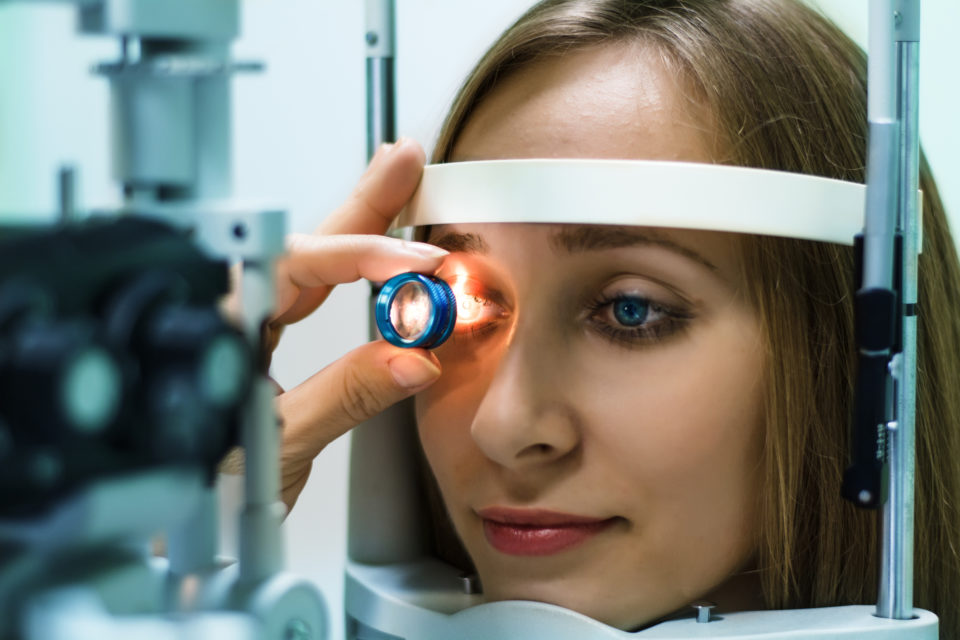
Baylor University researchers have created a mobile health app that helps parents detect early signs of eye disease, such as retinoblastoma, in their children. This app, CRADLE (Computer Assisted Detector Leukocoria), was developed by Baylor researchers Bryan F. Shaw, PhD, professor of chemistry and biochemistry, and Greg Hamerly, PhD, associate professor of computer science. Their study evaluating CRADLE was published in Science Advances on October 2.
The app searches for abnormal reflections in the retina that constitute leukocoria, or “white eye”. This is a characteristic symptom of retinoblastoma, an aggressive eye cancer seen in pediatric patients, and several other eye disorders. This study found that CRADLE was effective in enhancing the traditional screening procedure for leukocoria. These findings indicate that the app could be a powerful tool in simplifying the screening process for parents of developing children.
First author Michael Munson, Baylor senior University Scholar, claims that their prototype’s sensitivity, accuracy, and specificity was determined by analyzing over 50,000 images of children taken before they were diagnosed. For pediatric patients with diagnosed eye disease, CRADLE correctly detected leukocoria for 80% of them. The app also detected leukocoria in images taken an average of 1.3 years before the official diagnosis.
Traditional eye screening during a general physical examination only shows signs of retinoblastoma through leukocoria detection in 8% of cases. The Baylor researchers’ app displayed a sensitivity for children aged 2 years or younger at over 80%, which is considered the gold standard of sensitivity by ophthalmologists according to Munson.
In addition, CRADLE was able to make these predictions by simply analyzing family photos of the children. With such photos of children often being prevalent, it is a convenient means of diagnosis for the app to leverage. The researchers note that as the algorithm driving their app has developed further, it has gained the ability to detect very subtle cases of leukocoria.
“This is one of the most critical parts of building the app,” explained Shaw. “We wanted to be able to detect all hues and intensities of leukocoria.
CRADLE was created to detect retinoblastoma, the most common eye cancer in children 5 years of age and younger. The creation of the current app stemmed from Shaw’s experience raising a child with retinoblastoma. Shaw’s son lost his right eye to the disease but was able to have his left saved.
“As a parent of a child with retinoblastoma, I am especially interested in detecting the traces of leukocoria that appear as a ‘gray’ pupil and are difficult to detect with the naked eye,” he said.
Shaw and Hamerly made the CRADLE app together in 2014, debuting for iOS devices. The following year they created an app that is compatible with Android devices.
“We suspected that the app would detect leukocoria associated with other more common disorders and some rare ones,” Shaw said. “We were right. So far parents, and some doctors, have used it to detect cataract, myelin retinal nerve fiber layer, refractive error, Coats’ disease, and of course retinoblastoma.”
Shaw noted that their team is currently retraining their predictive algorithm using an additional 100,000 images. To reduce misdiagnoses, they are also exploring additional features to add to their app.
Smartphone + #AI-automated diagnosis of childhood eye conditionshttps://t.co/FrLBXVlSjR @ScienceAdvances app is free, paper is #openaccess pic.twitter.com/z79zKE9QqW
— Eric Topol (@EricTopol) October 2, 2019







 © 2025 Mashup Media, LLC, a Formedics Property. All Rights Reserved.
© 2025 Mashup Media, LLC, a Formedics Property. All Rights Reserved.